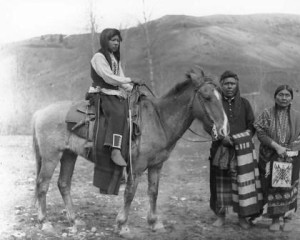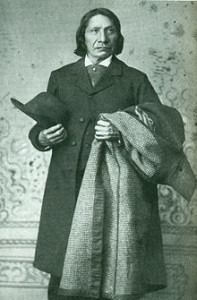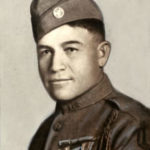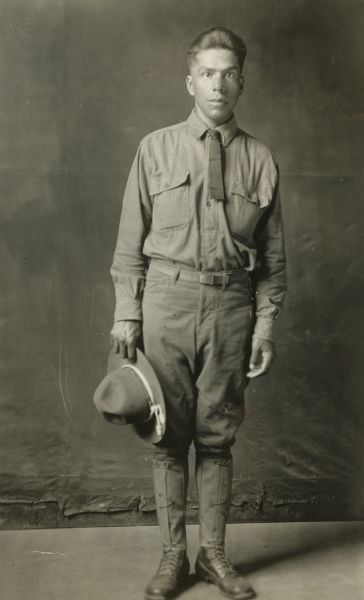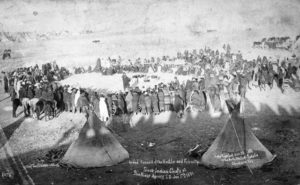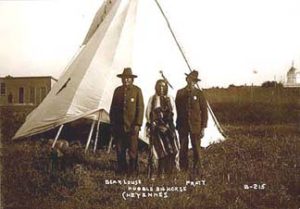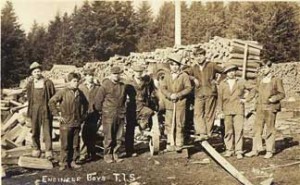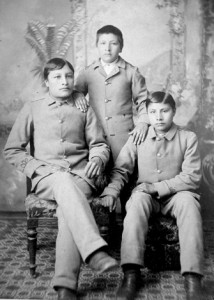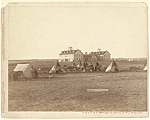Parents who did not want to send their children to boarding school could not always fight back, but many parents tried to instill the traditional ways and values of their culture into their children despite the federal government. When children returned to their reservations, they could still attend dances and ceremonies, speak their native language (if they still remembered it), wear traditional clothing, hear the old stories, etc. Some, of course, rejected the old ways, but many were willing to incorporate them into the new knowledge and way of life they had seen off-reservation.
Elders in some tribes did all that they could to keep tradition intact. Around the turn of the twentieth century, the Taos Pueblo required men to wear their hair in braids and wear traditional clothing. If they wore “American” pants, they had to cut the seat out and wear a blanket around the middle; this outfit resembled deerskin leggings and the breech clout. Purchased shoes had to have the heels cut off to resemble moccasins.
Children who refused to grow their hair long once they returned from school or who wore “American” clothes, could be fined one to five dollars. If they refused to participate in dances they were given the alternative of a ten-dollar fine or a dollar-a-stroke whipping in the plaza.*
*These details are taken from Masked Gods: Navaho and Pueblo Ceremonialism by Frank Waters.

